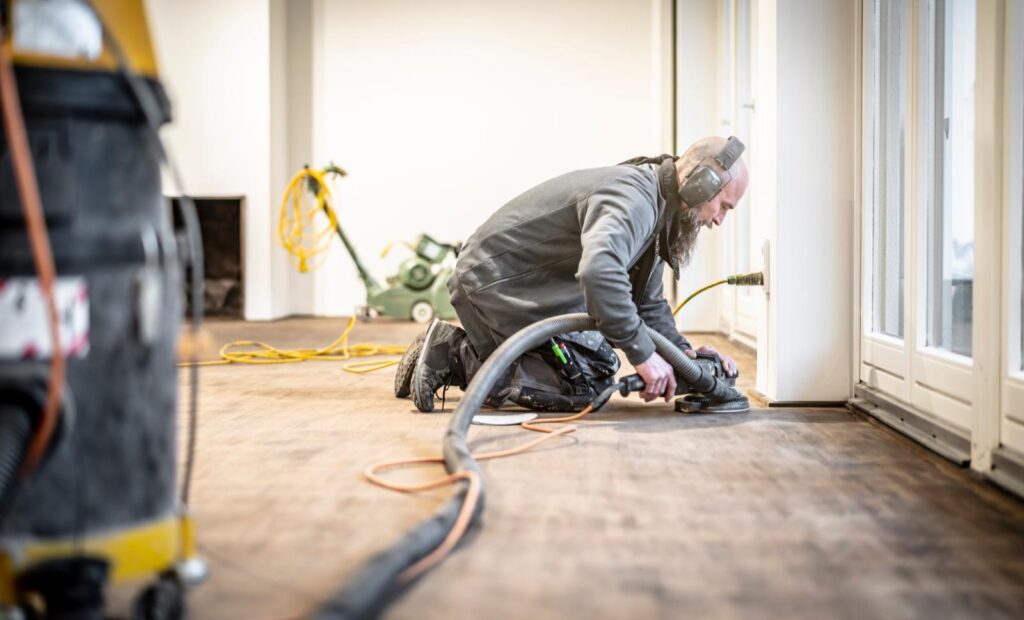
Contents
When faced with a burst pipe flooding your basement, knowing how to handle emergency water damage is essential. Expert tips for 24/7 assistance can make all the difference in mitigating the impact. From immediate action to safeguarding your property, these strategies are designed to help you navigate through a water damage crisis effectively.
Key Takeaways
- Contact a professional restoration company for immediate response.
- Document all damage thoroughly for insurance claims.
- Turn off electricity and water sources to ensure safety.
- Protect personal belongings from further damage.
- Follow safety measures during cleanup to prevent accidents.
Immediate Response Is Key
When facing water damage, acting swiftly is vital. Emergency preparedness and water safety are pivotal components in dealing with such situations effectively.
In the event of water damage in your home, quick action can help prevent further destruction and minimize the impact on your property.
To make sure you’re prepared for any water-related emergencies, it’s crucial to have a plan in place. Familiarize yourself with the location of shut-off valves for water and gas in your home. Additionally, keep emergency contact numbers, such as those of a professional restoration company, readily available. Being proactive and having a well-thought-out strategy can make a significant difference in how you handle water damage emergencies.
Water safety is another vital aspect to take into account when dealing with water damage. Always prioritize your safety and the safety of those around you. If the water damage is extensive or poses a risk, evacuate the area immediately and seek professional help. Avoid contact with standing water if there’s a chance it may be contaminated.
Contact a Professional Restoration Company
When facing water damage, it’s essential to contact a professional restoration company promptly. These experts have a rapid response team ready to assess the situation and begin mitigation immediately.
They also possess specialized equipment needed to efficiently dry and restore your property to its pre-damage condition.
Rapid Response Team
For swift and effective response to water damage emergencies, contacting a professional restoration company is vital. When you reach out to a reputable restoration company, they’ll dispatch a rapid response team to your location promptly. This team is trained to handle emergency situations efficiently and effectively.
The first step the rapid response team will take is to conduct an on-site evaluation of the water damage. This evaluation is essential for determining the extent of the damage and developing a plan of action to mitigate it.
Efficient communication is a key component of the rapid response team’s strategy. They’ll keep you informed throughout the restoration process, providing updates on their progress and any changes to the initial evaluation. This transparent communication ensures that you’re always aware of what’s happening and what steps are being taken to restore your property.
Specialized Equipment Needed
To effectively address water damage, specialized equipment is essential, and contacting a professional restoration company is the best course of action.
When it comes to water extraction, industrial-grade pumps and vacuums are pivotal for removing large quantities of water quickly. These tools are operated by trained technicians who can efficiently extract water from the affected area, preventing further damage and mold growth.
Furthermore, drying techniques play a significant role in the restoration process.
High-powered air movers and dehumidifiers are used to dry out the space thoroughly. The air movers facilitate evaporation by circulating the air, while dehumidifiers remove excess moisture from the air, aiding in the drying process.
Document the Damage for Insurance Claims
To accurately file an insurance claim for water damage, your first step is to thoroughly document all damages to your property. This documentation is pivotal in ensuring you receive proper compensation for the harm caused by the water. Here are some essential tips to help you document the damage effectively:
Take Clear Photos: Capture detailed images of the affected areas before starting any cleanup or restoration work. These photos will serve as valuable evidence for your insurance claim.
List Damaged Items: Make a list of all items that have been damaged by the water. Include details such as the item’s description, brand, approximate age, and value if possible.
Keep Samples: If possible, keep samples of damaged materials like flooring or wall sections. These samples can provide additional proof of the extent of the damage.
Save Receipts: Keep receipts for any expenses related to water damage repair or temporary accommodations. These receipts can help support your claim for reimbursement.
Contact Your Insurance Company: Notify your insurance provider as soon as possible to initiate the claims process. They can guide you on the necessary steps to take and the information they require for your claim.
Turn Off Electricity and Water Sources
Protecting your home from further water damage is crucial in the aftermath of a water-related incident. To prevent additional issues, start by turning off electricity and water sources. Safety precautions are essential to avoid accidents and further damage.
The first step is to ensure your safety by switching off the main electrical breaker to prevent any potential electrical hazards caused by water. Avoid contact with electrical outlets, appliances, or electronics until it’s safe to do so. Water and electricity are a risky combination, so take this step seriously.
Next, locate the main water shut-off valve and turn off the water supply to your home. This action will help prevent additional water from entering your property and causing more damage.
Protect Personal Belongings From Further Damage
To safeguard your personal belongings from additional harm during a water damage emergency, act swiftly to salvage valuables like important documents and sentimental items.
Utilize plastic bins to store items, protecting them from moisture and further water exposure.
Elevate furniture off the ground to prevent additional water absorption and damage.
Salvage Valuables Immediately
Upon discovering water damage in your home, it’s vital to salvage your valuables immediately to prevent further damage. Here are some pivotal steps to help you protect your belongings:
Remove Items: Quickly take out any valuables from the affected area.
Prioritize Electronics: Safely unplug and move electronics to a dry place.
Safeguard Documents: Place important documents in a safe, dry location.
Dry Items: Use towels or cloths to pat dry items like photos or books.
Utilize Fans: Set up fans to help dry out damp items faster.
Use Plastic Bins
For added protection against further damage, utilizing plastic bins to store your personal belongings can be a wise strategy. Water containment is essential during water damage emergencies to prevent additional harm to your valuables. Plastic bins provide a protective barrier against moisture, keeping your items safe from water exposure. By placing your belongings in these bins, you create a barrier that helps prevent water from seeping in and causing further destruction.
Furthermore, using plastic bins aids in mold prevention. Mold thrives in damp and dark environments, making it a common issue after water damage incidents. By storing your items in plastic bins, you reduce the risk of mold growth, as plastic is a material that resists mold development. This proactive measure can safeguard your personal belongings from the harmful effects of mold, ensuring that they remain in good condition.
Incorporating plastic bins into your water damage emergency plan is a practical way to protect your valuables from water damage and mold growth. By taking this simple step, you can minimize the potential for additional harm to your personal belongings.
Elevate Furniture
Consider raising your furniture to protect your personal belongings from further damage during a water emergency. Elevating your furniture is an essential step in safeguarding your cherished items from potential water damage. Here are some prevention methods to help you protect your belongings:
Use furniture risers: Elevate your furniture by placing them on sturdy furniture risers. This simple step can help keep your items safe from water exposure.
Place furniture on blocks: Utilize wooden blocks or bricks to raise your furniture off the ground. This method is effective in preventing water from seeping into your belongings.
Install waterproof barriers: Consider using waterproof barriers like plastic sheets or tarps underneath your furniture to provide an additional layer of protection.
Utilize aluminum foil: Placing aluminum foil under the legs of your furniture can act as a barrier against water damage.
Invest in furniture coasters: Furniture coasters with waterproof properties can help elevate your furniture while also protecting them from moisture.
Stay Safe During Cleanup
To ensure your safety during the cleanup process after water damage, it’s vital to take necessary precautions. Safety measures are important to prevent accidents or health risks during the clean-up process.
First and foremost, make sure the electricity is turned off before entering any water-damaged area to avoid the risk of electric shock. Additionally, wear protective gear such as rubber gloves, boots, and masks to shield yourself from potential contaminants in the water.
When starting the clean-up process, begin by removing any standing water using a wet vacuum or pump. It’s significant to work quickly but cautiously to prevent mold growth and further damage. Dispose of any items that can’t be salvaged or disinfected properly to avoid health hazards.
Remember to thoroughly clean and disinfect all surfaces that have come into contact with the water to prevent the growth of mold and bacteria.
Be mindful of slippery surfaces and unstable structures while cleaning up to avoid falls or injuries. If you’re unsure about handling specific tasks during the clean-up process, it’s recommended to seek professional help. Your safety should always be a top priority when dealing with water damage, so take the required precautions to protect yourself throughout the cleanup process.
Recap
To sum up, it is essential to act swiftly when facing emergency water damage. Did you know that water damage is the second most common reason for homeowners to file an insurance claim in the United States? By following expert tips such as contacting a professional restoration company, documenting damage for insurance purposes, and ensuring safety during cleanup, you can effectively mitigate the impact of water damage and protect your property.
Recent Posts
Why Choose Professional Water Extraction and Mold Cleanup?
When faced with water damage, you can’t afford to overlook the risks of mold growth.
What Are Emergency Water Extraction Services?
Water damage can strike unexpectedly, yet the right emergency water extraction services can make a
Affordable Mold Removal Services for Businesses
Did you know that mold can silently undermine your business’s health and safety standards? Ignoring
